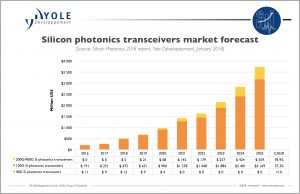This is another blog post in a new series where we talk to SIMULIA employees about current projects they are working on and developments they see in the simulation world. Recently, we talked to Frank Scharf, a Technical Sales Director at SIMULIA, about the rise of Photonic Integrated Circuits (PICs) in the optical market and how simulation can help. Check out our first SIMULIA Talks interview, here.
Who are you & what is your role in the company?
My name is Frank Scharf and I am a Technical Sales Director with responsibility for coordinating optical applications. In this role, I follow the latest developments in industry and academia, and interface with our development, support teams, and partners to ensure that we continue to offer a strong solution to the rising challenges.
What developments are you most excited about in the optical market?
Photonic Integrated Circuits (PICs) are on the rise and they enable communication companies to address the ever-increasing need for bandwidth thanks to the higher frequencies and shorter wavelengths at optical frequencies. There are also great opportunities for PICs in medical sensing and military applications. PIC design tools have improved dramatically over the past few years. Now that this is backed by an increasing demand from industry, I expect more exciting design capabilities in the near future, which will lead to the availability of more powerful PICs at a lower price point.
How is electromagnetic/photonics simulation playing a role in those developments?
PICs are generally designed on a circuit level, connecting circuit components with optical waveguides. Those components need to be designed and optimized carefully so that the chip performs well. Since the components are typically many wavelengths in size and can have arbitrary shapes, field simulation is really the only way to characterize them accurately. In addition to that, PICs are often controlled through electrical circuits and the electrodes connecting the electronic and photonic parts need to be optimized as well.
Are there any areas that previously didn’t use electromagnetic simulation as much that have started to integrate electromagnetic/photonics simulation in their workflow?
Not so much. If you think back at the first antenna and circuit designers, the situation was different. Simulation tools were limited in their capabilities, difficult to use and, as a result, not widely adopted. Electronic circuits and antennas were relatively easy to build by hand and to modify, for example by adding some conductive tape to an antenna prototype. They were also relatively easy to measure. The picture has changed with minituarization and the availability of accurate and user-friendly simulation software. It is now more cost-effective to employ simulation software as much as possible before prototyping. The latest incarnation of PIC design (which were suggested first in 1969 by S.E. Miller) started in this new world, so it is no surprise that PIC designers heavily rely on simulation software.

This does not mean that there are no challenges left for software providers like us, but they are more of the technical kind. For example, PICs are typically so large in terms of wavelengths, that it is impractical to simulate them completely using full-wave simulation. Instead, a combined approach of full-wave and circuit level simulation is required. It is also often necessary to include other physics, like thermal effects, in the simulation. It is our responsibility to make sure that this approach is user-friendly, while remaining fast and accurate at the same time.

Interested in simulation for optical applications? Visit our website and explore our eSeminars, whitepapers and application articles covering a wide range of simulation challenges, including:

